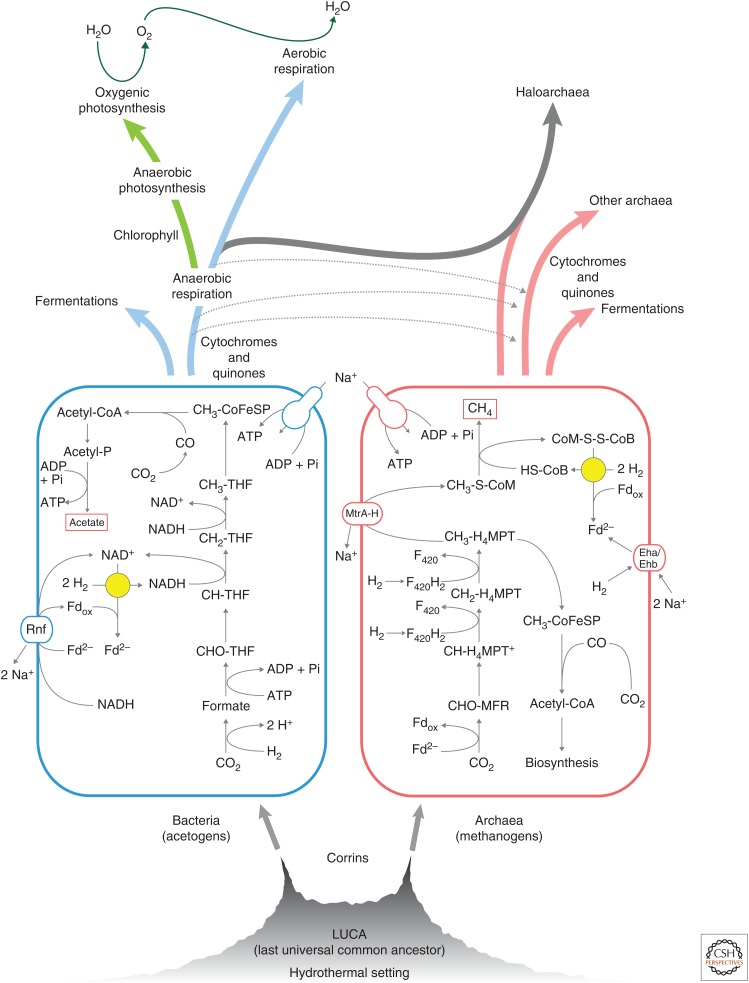Figure 2.
A possible sequence of events in early evolution starting from alkaline hydrothermal vents. Simplified scheme of energy metabolism showing the similarities between acetate (left) and methane (right) formation from H2 and CO2 by acetogenic bacteria without cytochromes (the map shown is for Acetobacterium woodii, based on data in Schuchmann and Müller 2014) and hydrogenotrophic methanogenic archaea (from data in Buckel and Thauer 2013). In primitive methanogens, Na+ pumping is powered by the exergonic transfer of a methyl group from methanopterin to coenzyme M and the methyltransferase MtrA-H is the energy-coupling site (Buckel and Thauer 2013). In acetogens of the A. woodii type, Na+ pumping is powered by the exergonic transfer of electrons from ferredoxin to NAD+ with Rnf as energy coupling site (Schuchmann and Müller 2014). Electron bifurcation steps (Buckel and Thauer 2013) are indicated by a yellow circle—these are the reaction catalyzed by heterodisulfide reductase (archaea) and hydrogenase (bacteria). With the advent of cytochromes and quinones, respiratory chains became possible. The exploration of new environments, electron donors and terminal acceptors, expansion of available redox couples, and interdomain gene lateral gene transfers (dotted gray arrows) led to the diversification of archaeal and bacterial physiology. Metabolic end products are boxed. The acetogenic reaction is 4H2 + 2CO2 → CH3COOH + 2H2O with ΔGo′ = –95 kJ · mol−1 under standard conditions and ΔG′ = –40 kJ · mol−1 at roughly physiological substrate concentrations, with an energy yield of 0.3 adenosine triphosphate (ATP) per acetate (Schuchmann and Müller 2014). The methanogenic reaction is 4H2 + CO2 → CH4 + 2H2O with ΔGo′ = –131 kJ · mol−1 under standard conditions and ΔG′ = –40 kJ · mol−1 at roughly physiological substrate concentrations, with an energy yield of 0.5 ATP per methane (Buckel and Thauer 2013). Note that a hydrogenotrophic methanogen like Methanothermobacter marburgensis (Thauer et al. 2008) generates ∼40 molecules of methane for every molecule of CO2 that is fixed as cell carbon. MFR, methanofuran; MPT tetrahydromethanopterin; CoM, coenzyme M; CoB, coenzyme B; CoM-S-S-CoB, heterodisulfide of coenzyme M and coenzyme B; Fd, ferredoxin; Eha and Ehb, energy-converting hydrogenases; MtrA-H, methyltransferase; Rnf, energy-converting ferredoxin:NADP+ oxidoreductase Rnf (based on data in Figure 11 in Decker et al. 1970).

